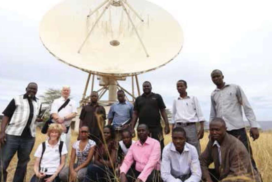Sustainable JIVE

Outreach and Advocacy
Support the sustainability of JIVE and the EVN in the coming decade through profiling the scientific impact of high-resolution radio astronomy amongst the general public, policy makers and peers in the scientific community.
Building new Partnerships
In order for JIVE to be an efficient and sustainable European entity, it must attract more partners in its first 5-year cycle. A number of opportunities exist to target new countries, involved or interested in VLBI.
ERIC Scope: The International LOFAR Telescope
Exploring synergies between JIVE and ILT.
 This project has received funding from the European Union’s Horizon 2020 research and innovation programme under grant agreement No 730884
This project has received funding from the European Union’s Horizon 2020 research and innovation programme under grant agreement No 730884
